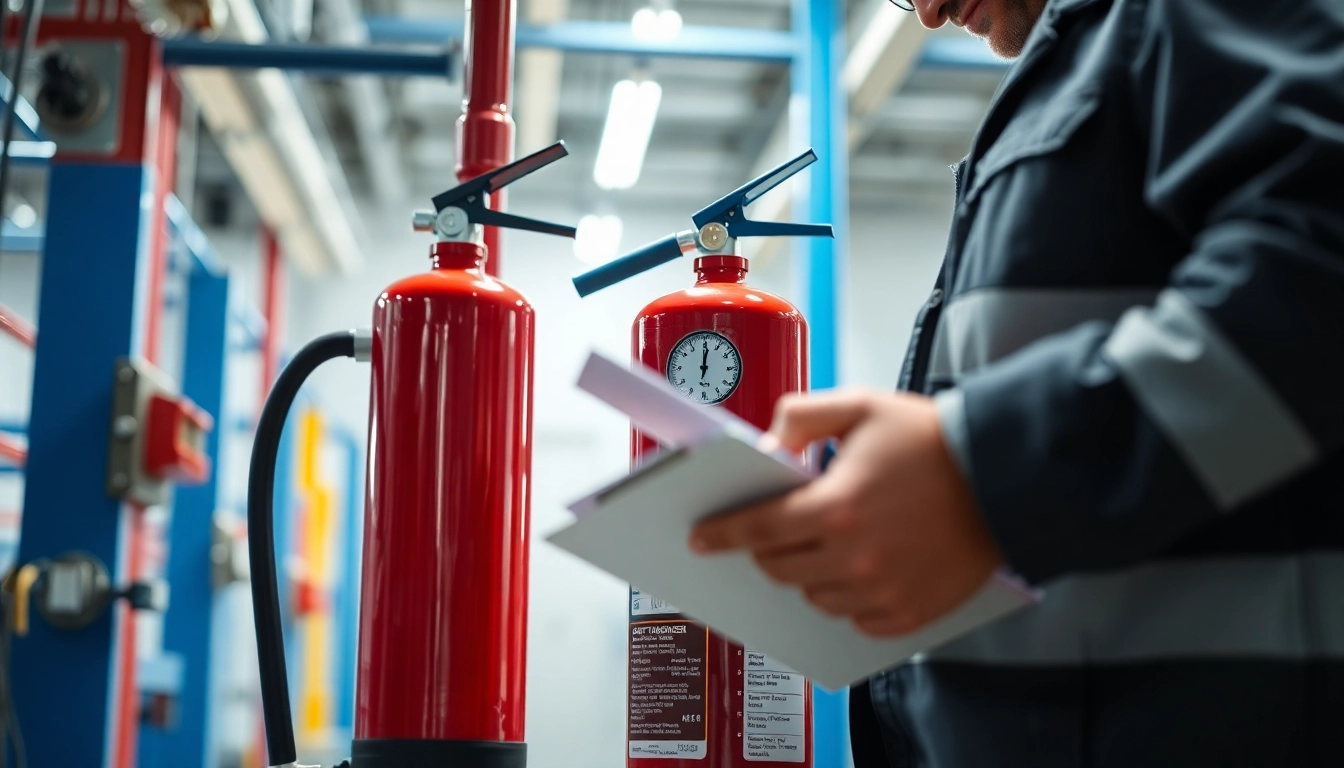Understanding Fire Extinguisher Checks
Fire extinguishers are crucial for ensuring safety in homes, offices, and industrial settings. Regular fire extinguisher checks are essential to maintain their functionality and compliance with safety standards. In this comprehensive guide, we will explore various aspects of fire extinguisher checks, from understanding what they entail to learning how to conduct them effectively.
What Are Fire Extinguisher Checks?
Fire extinguisher checks refer to the systematic process of inspecting, maintaining, and testing fire extinguishers to ensure they are in adequate working condition. These checks involve both visual inspections and more detailed assessments that may require specialized equipment. An effective checking process involves several protocols designed to identify potential issues before they become serious problems, thus enhancing fire safety readiness.
The Importance of Regular Checks
The significance of regular fire extinguisher checks cannot be overstated. First and foremost, they ensure that fire extinguishers function correctly in emergencies, potentially saving lives and minimizing property damage. Regular checks help to identify expired equipment, reduce the risk of malfunctions, and maintain compliance with insurance and local regulations, ultimately fostering a culture of safety within organizations and homes.
Legal Requirements and Standards
In the United States, fire extinguisher checks fall under specific legal requirements and standards, notably those established by the National Fire Protection Association (NFPA). According to NFPA 10, fire extinguishers must be inspected monthly, maintained annually, and tested periodically, which may necessitate more specialized assessments such as hydrostatic testing every five to twelve years, depending on the type of extinguisher and its specific requirements.
How to Conduct a Fire Extinguisher Check
Steps for Monthly Visual Inspections
A monthly visual inspection is a straightforward process that any trained individual can conduct. Here are key steps you should follow:
- Accessibility: Ensure that the fire extinguisher is easily reachable, without any obstructions around it.
- Physical Condition: Inspect the body of the extinguisher for any physical signs of damage, including dents, rust, or leaks.
- Pressure Gauge: Check the pressure gauge to make sure it’s in the operational range—green signifies good condition while red indicates a problem.
- Inspection Tag: Verify that the inspection tag is present and up-to-date.
- Labels & Instructions: Ensure that the labels are clear and legible, providing all necessary instructions for use.
Annual Maintenance Procedures
In addition to monthly inspections, annual maintenance should be performed by a qualified professional. This process involves:
- Complete disassembly of the extinguisher to check for internal wear and tear.
- Replacement of any defective parts, such as valves or seals.
- Refilling or recharging the extinguisher if necessary.
- Documentation of all maintenance performed, ensuring compliance with local regulations.
Paperwork and Documentation Requirements
Maintaining accurate documentation is vital for legal compliance and organizational records. Each month, the person conducting inspections should sign and date an inspection tag, noting any issues discovered and actions taken. For annual maintenance, a detailed report from the service provider should be retained, highlighting services performed and any recommendations for future actions.
Common Issues Found During Fire Extinguisher Checks
Physical Damage and Wear
During checks, physical damage or wear is often the most readily noticeable issue. Denting, rust, or corrosion can compromise the integrity of the extinguisher, which may prevent it from working correctly in an emergency. Regular checks can help catch these issues early, ensuring that extinguishers are repaired or replaced as needed.
Pressure Gauge Malfunctions
The pressure gauge is a critical component that indicates the condition of the extinguisher. If it is malfunctioning or the needle is in the red zone, the extinguisher may not deliver the necessary pressure to fight a fire effectively. Routine checks help identify these problems quickly, permitting timely resolution.
Expiry Dates and Outdated Equipment
Many extinguishers come with expiration dates, which are crucial for safety compliance. An expired extinguisher may not function as intended, putting lives at risk. Regular inspection will help ensure that equipment is replaced or serviced before reaching its expiry.
Professional Services for Fire Extinguisher Checks
When to Hire a Professional
While some aspects of fire extinguisher checks can be conducted by trained personnel, there are instances when hiring a professional is necessary. For example, if an inspection reveals any major issues, or if your organization operates a large number of extinguishers across multiple sites, utilizing a specialized fire protection company can streamline compliance and ensure thorough inspections.
Finding Reliable Inspection Services
When selecting a professional service for fire extinguisher checks, consider the following criteria:
- Certifications: Ensure that the company is certified by the NFPA or other relevant authorities.
- Experience: Look for companies with a proven track record in fire safety services.
- References and Reviews: Check online reviews or ask for references from past clients to assess service quality.
The Benefits of Outsourcing Fire Safety
Outsourcing fire safety services, including extinguisher checks, can provide numerous benefits. These include access to trained professionals with extensive knowledge of the latest regulations and technologies, the ability to focus on core business functions, and enhanced peace of mind, knowing that fire safety is being adequately managed.
Staying Compliant with Fire Safety Regulations
Federal and State Guidelines
Compliance with federal and state guidelines is critical for ensuring safety in any environment. FEMA and OSHA have specific mandates regarding fire safety that organizations must adhere to. Understanding and implementing these guidelines ensures that your fire safety measures are not only effective but also legally compliant.
Creating a Safety Compliance Schedule
Creating a comprehensive compliance schedule is essential to maintain the effectiveness of your fire safety measures. This schedule should include monthly visual checks, annual maintenance procedures, and intervals for hydrostatic testing, ensuring that all parties involved understand their responsibilities and timelines.
The Role of Regular Training and Awareness
Regular training and awareness programs should accompany fire extinguisher checks to ensure that all personnel know how to use extinguishers effectively and understand the importance of regular inspections. Training should cover the types of extinguishers, proper usage techniques, and protocols during an emergency. By fostering a culture of safety awareness, organizations can further mitigate risks associated with fire hazards.
Conclusion
Conducting regular fire extinguisher checks is an essential component of fire safety, both for compliance and ensuring the safety of occupants and property. By understanding the importance of these checks, knowing how to carry them out, and identifying common issues, organizations can significantly enhance their fire protection strategies. Whether opting for in-house checks or professional services, the ultimate goal should always be protecting people and property from the risk of fire.



